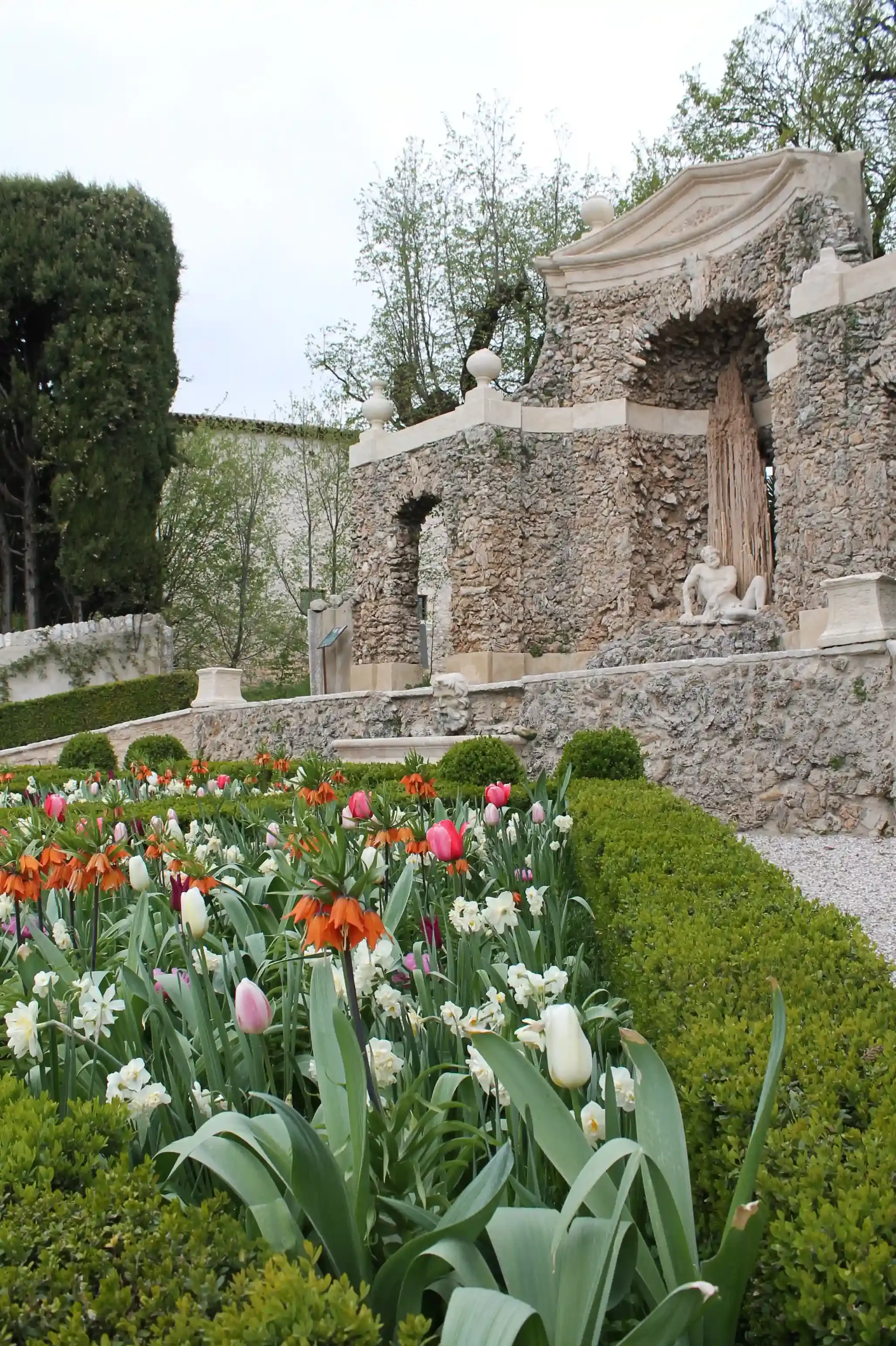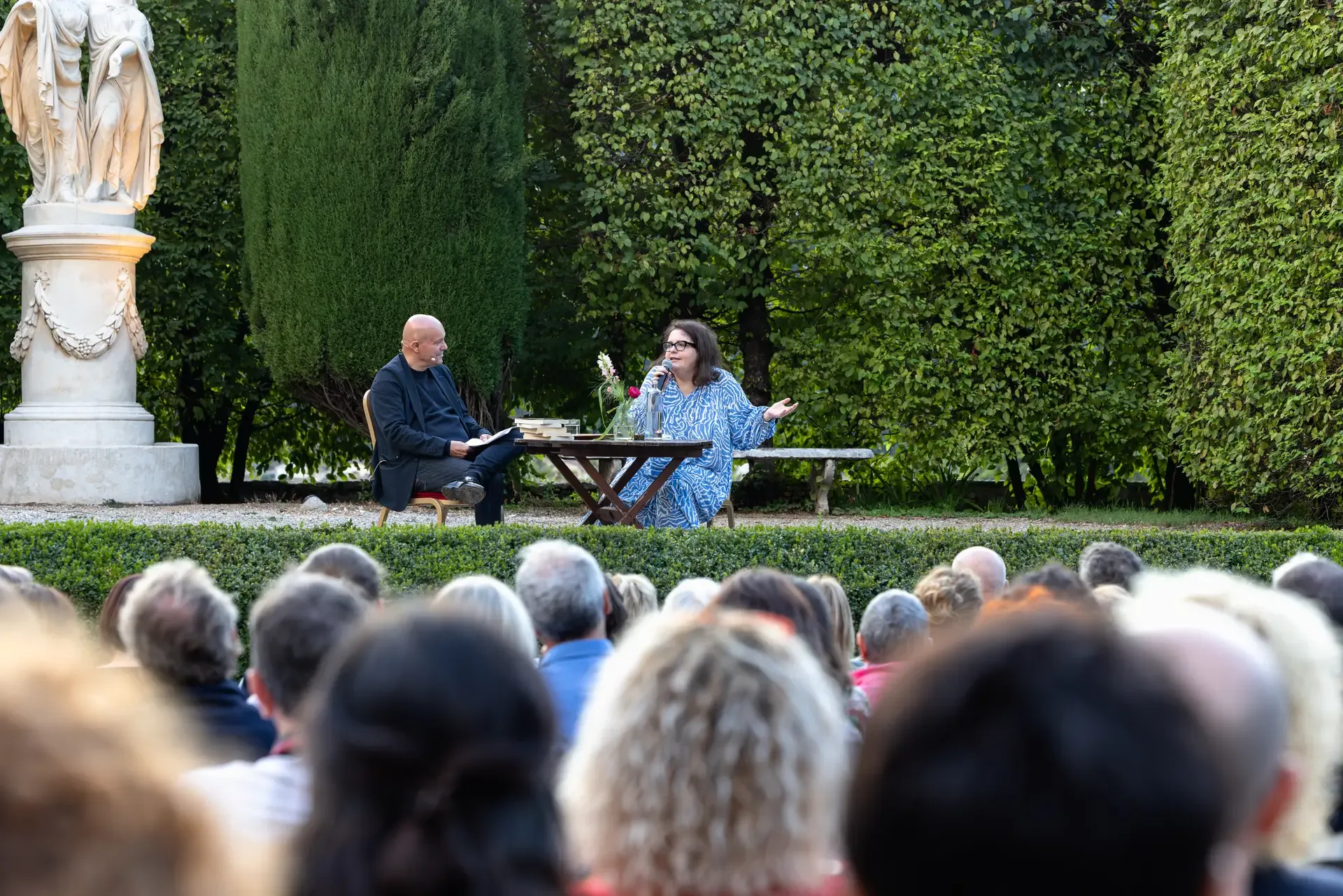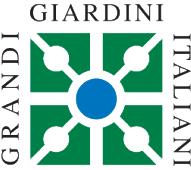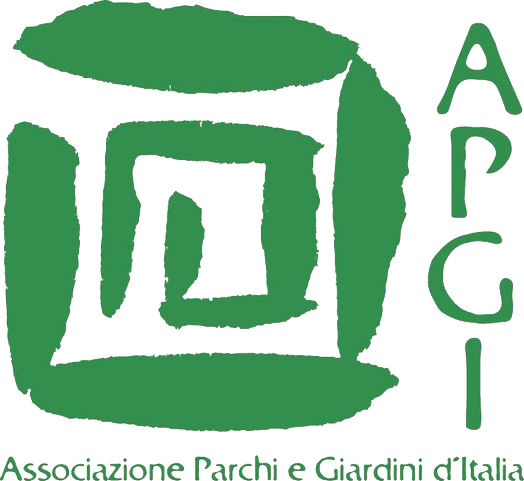Check the closing dates before planning your visit.
The New Garden of Pojega: History, Restoration, and Future of a Landscape Masterpiece
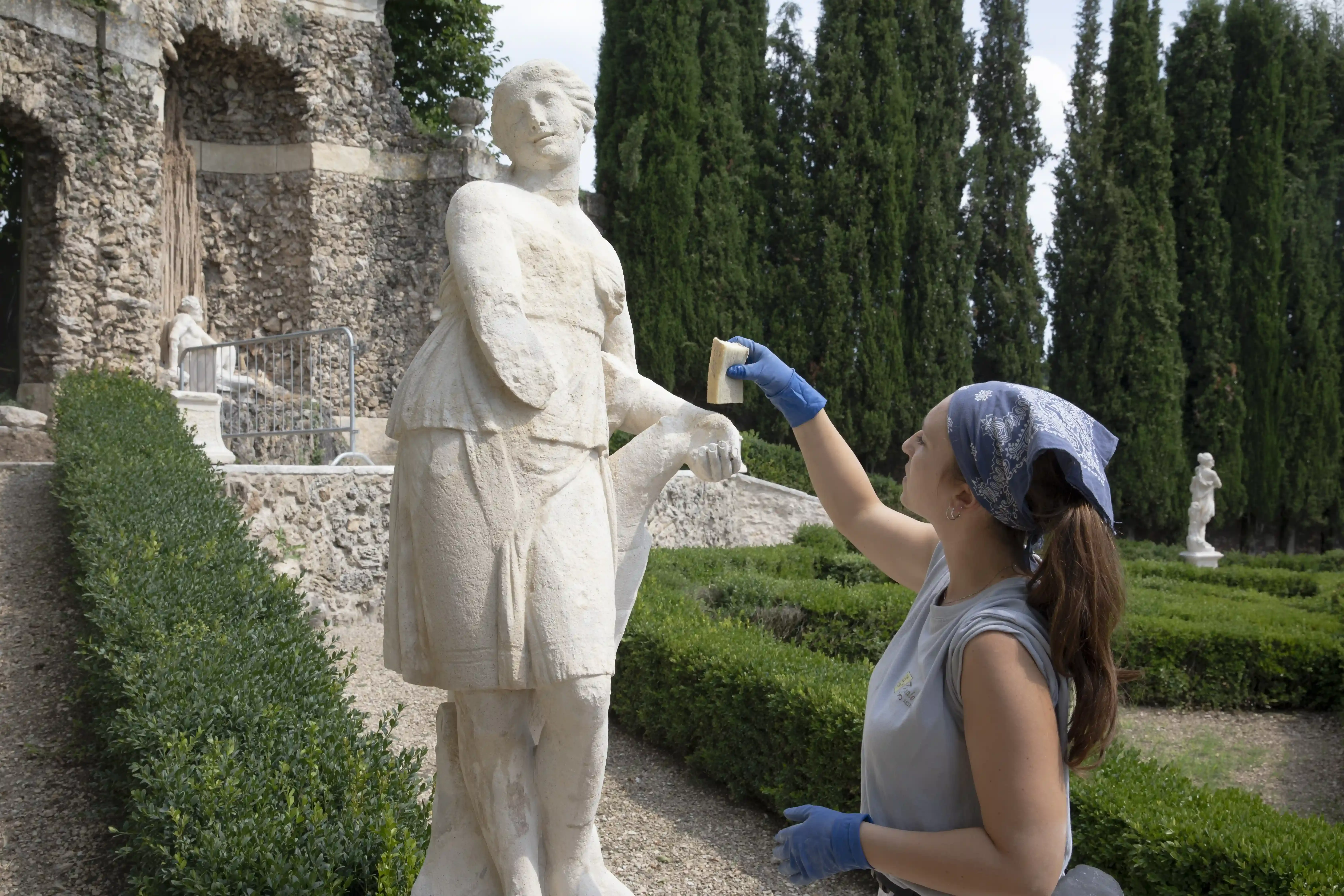
Once a private space of rare elegance, today the Garden of Pojega looks to the future with renewed vitality, thanks to a significant restoration effort funded by the PNRR “Historic Parks and Gardens” program. The conference “Presentation of the Restoration and Enhancement Works of the 18th-century Garden of Pojega at Villa Rizzardi”, held on April 16 at the Academy of Agriculture, Sciences, and Letters in Verona, was an opportunity to recount the rebirth of one of the most fascinating gardens in Veneto—a place where architecture, botany, memory, and vision intertwine.
The event was opened by Claudio Carcereri de Prati, President of the Academy, who highlighted the documentary and cultural value of the garden. He recalled how the Academy preserves a precious digitized photographic archive dating back to the 1970s. With a literary touch, he evoked the words of architect Luigi Trezza in a letter to his patron Pio de Lorenzi, in which he wrote about his trip to Rome: «I liked it so much that I feel sorry for my future clients, as they will have to endure the weight of the wonders I have admired.» A passage that reveals how the beauty he observed had already ignited in Trezza an architectural vision capable of defying time.
A Second Youth for a Timeless Garden
«Today, the garden is more beautiful than when my ancestors had it built,» said Agostino Rizzardi, heir and current guardian of Pojega, with emotion. «Because trees and hedges have developed new perspectives. It’s as if the original design has come to completion over time.» The challenge of making the garden economically sustainable, in addition to being historically and culturally enhanced, found a valuable ally in the PNRR funding program. Out of over 1,000 applications, only 120 were approved—among them, the Garden of Pojega.
«When we found ourselves managing a two-million-euro investment, we felt the full weight of responsibility. It was a great challenge, but also a great opportunity. And today, I can say I am proud to have completed this journey, thanks to the precious collaboration of all the stakeholders involved.»
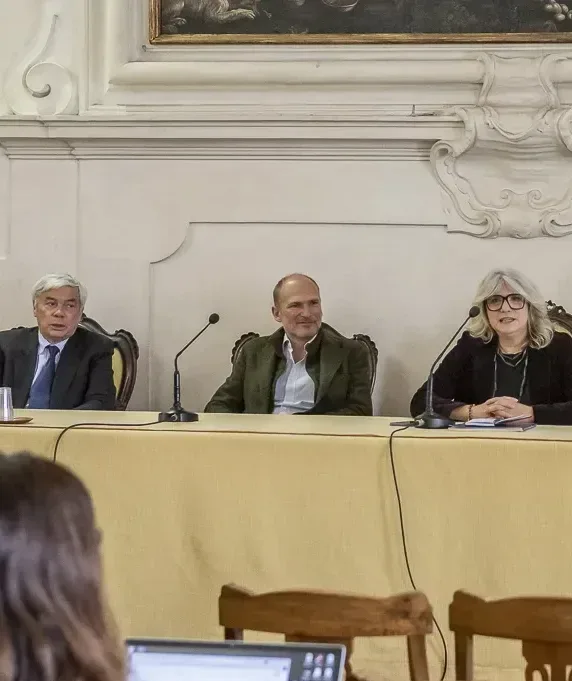
A Masterpiece by Trezza
Architect Daniela Cavallo of PG&W, the agency in charge of the garden’s enhancement, moderator of the conference, and a deep connoisseur of Luigi Trezza’s work, emphasized that the entire landscape project is the result of a complex and poetic thought. «Trezza designed architectures that tell stories and still resonate with our present. The Garden of Pojega isn’t vast, but it is made to endure. A place to ‘become one with’, to use a Dantean term: to become part of the landscape.» It is, she added, «a place to seek oneself: to go and to return, as one should do in a museum—return to see it from different perspectives. In the garden, perspectives shift constantly with the seasons.«
Indeed, the garden skillfully balances Italian geometries with English-inspired romanticism: four green “rooms,” a green theater, a small temple in the grove, and the belvedere are just some of the stops along a path designed to surprise and enchant throughout the year.
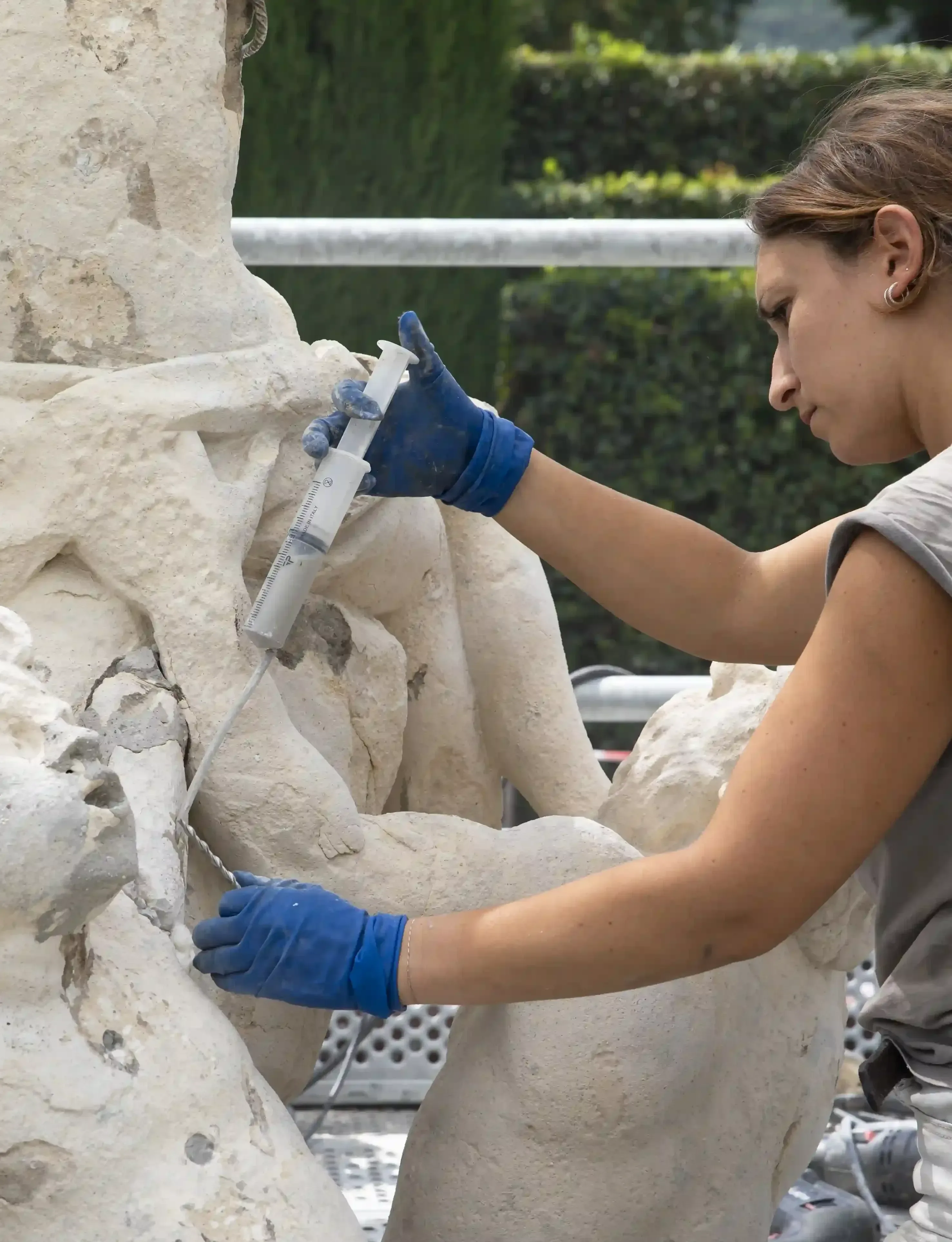
Architecture, Landscape, Living Matter
Engineer Filippo Giustiniani, head of the construction site and owner of Studio Giustiniani & Partners—an office with over thirty years of experience in the design and restoration of heritage buildings—spoke about working on castles, historic palaces, and villas in Veneto, including the facade restoration of Palladio’s Rotonda in Vicenza.
«It’s a garden that must be seen, no doubt,» said Giustiniani. «It lies on a gently sloping hill, shaped by human hands over millennia—as evidenced by the nearby Roman Villa—and it is rare for an Italian garden to be located in such a hillside position. Just over five hectares, but with architectural perspectives of great impact.» He recalled the effort required by an entirely outdoor construction site that lasted two years and was made even more complex by a season of relentless rain that threatened delivery deadlines.
Equally crucial was the work of landscape architect Giuseppe Rallo, an expert in the preservation and restoration of historic gardens, with over thirty years at the Veneto Oriental Superintendence. He was director of Villa Nazionale Pisani in Stra and led numerous projects, including the garden of Palazzo Soranzo Cappello in Venice.
Rallo highlighted Trezza’s genius in creating a geometrical layout with a powerful evocative force: «Looking at the aerial view of Pojega, one can see how the forms harmonize: the oval pond, the circular temple, and the rectangular axes chase each other in a coherent, visionary structure. A vegetal architecture made of symmetries, hidden geometries, and green rooms that generate visual surprises—like the grove with its pagan temple and six square rooms that precede it.»
A particularly meaningful intervention involved restoring the original hydraulic system: water, drawn from a natural spring within the property, is channeled through an ancient restored network of stone channels, supplying ponds, fountains, and the main lake, as well as providing irrigation. «Few gardens can boast such a historical feature,» Rallo emphasized, «original stone canals are too often removed or replaced in Italian gardens. Pojega is truly one of a kind.»
He reiterated the emotional value of the irregular garden, far from mere formal display and closer to the poetic ideal of the English sublime. «Trezza was ahead of his time. The garden does not have a single shape—it has infinite forms. Like a human being, it changes over time. For Pojega, we chose to create a new floral superstructure, giving visibility back to the Secret Garden with rare and common bulbs arranged not by strict order but by harmonious bloom and color combinations to convey a sense of modernity.»
Among the species: daffodils, fritillaria imperialis, irises, agapanthus, alliums, and roses. «We didn’t want a garden of the 18th century—but a garden that also speaks to the present, with lightness and beauty.»
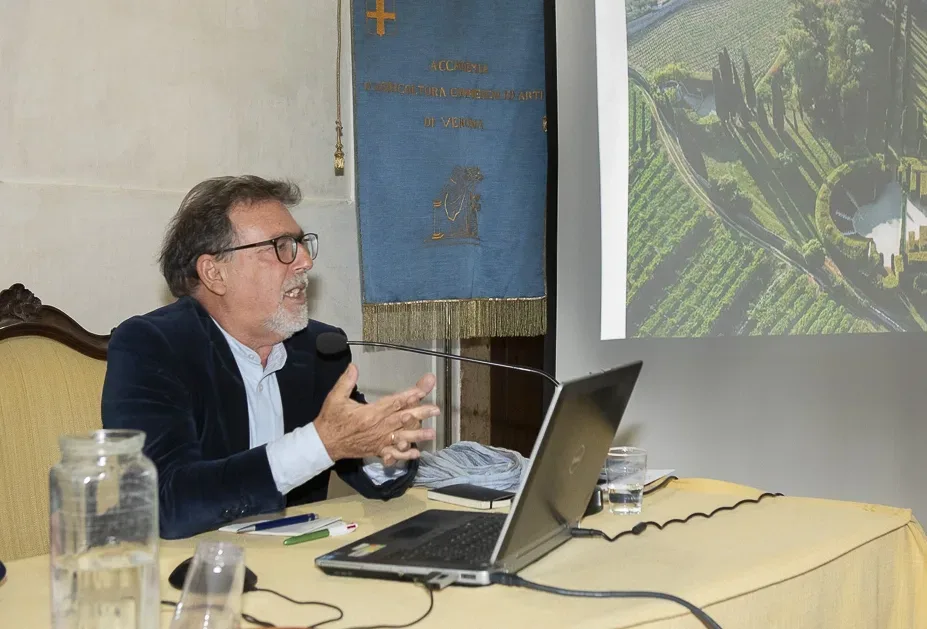
Un intervento particolarmente significativo ha riguardato il recupero del sistema idrico originario: l'acqua, prelevata da una fonte naturale situata all'interno della proprietà, viene convogliata attraverso un’antica rete di canaline in pietra restaurate, e distribuita per alimentare vasche, fontane e il laghetto, oltre che per l’irrigazione. «Non molti giardini possono vantare una simile testimonianza storica – ha sottolineato Rallo – quella delle canalizzazioni originali in pietra, troppo spesso sostituite o rimosse nei giardini italiani. Il Giardino di Pojega è un unicum per molte ragioni».
Ha poi ribadito il valore emozionale del giardino irregolare, lontano dalla mera esaltazione formale e molto vicino a quella poetica del sublime inglese. «Trezza è stato un antesignano. Il giardino non ha una forma sola, ne ha infinite. Come un essere umano, si modifica nel tempo. Per Pojega abbiamo scelto di creare una nuova sovrastruttura floreale, restituendo visibilità al Giardino segreto con bulbi rari e comuni, disposti non in ordine ma in armonia di colori e fioriture per dare contemporaneità».
Tra le essenze: narcisi, fritillaria imperialis, iris, agapanti, allium e rose. «Non volevamo un giardino settecentesco, ma un giardino che parlasse anche all’oggi, con leggerezza e bellezza».
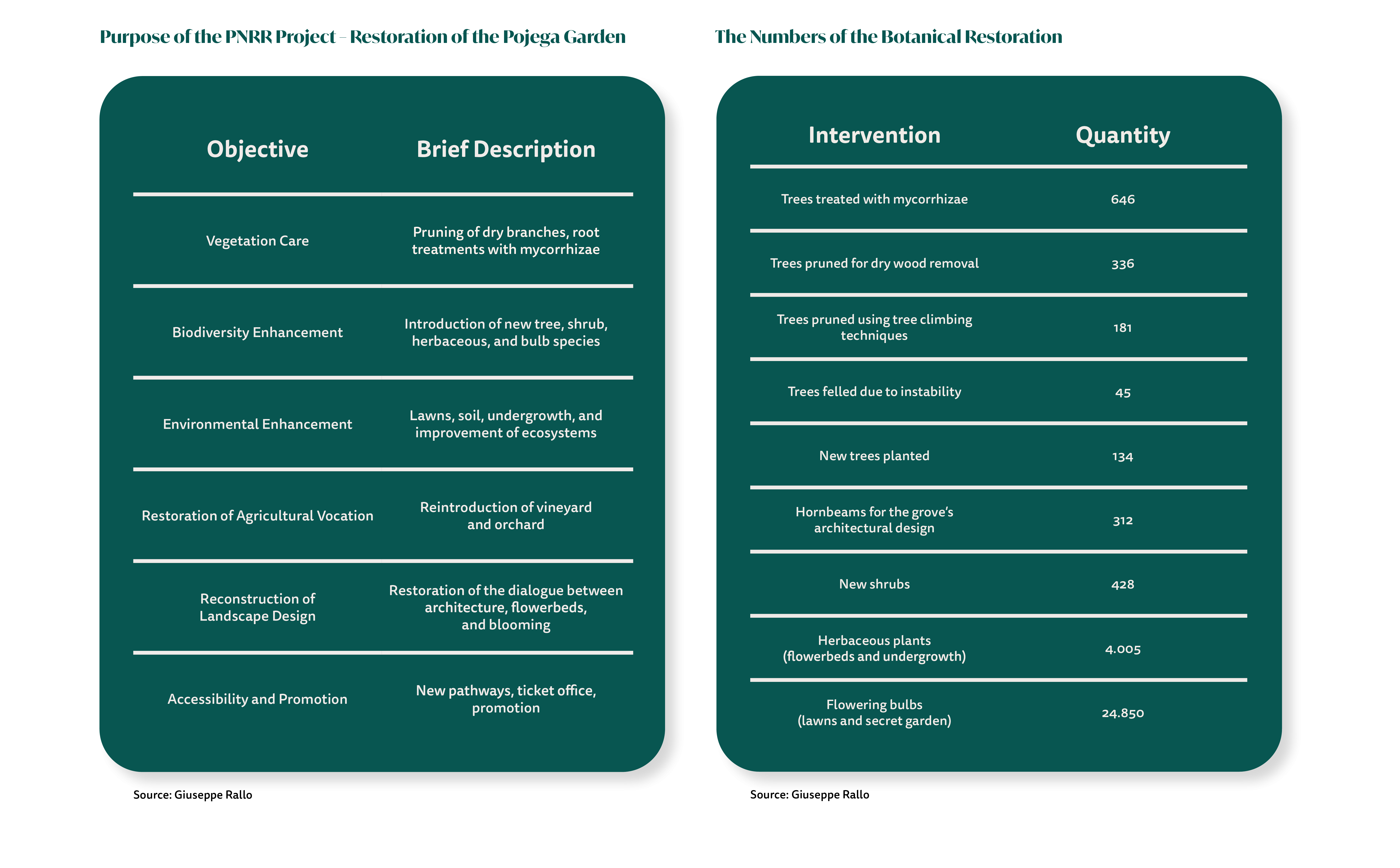
A Virtuous Example of Sustainability and Culture
The restoration of Pojega fully adhered to the PNRR guidelines, which for the first time introduced the concept of “care” for plant heritage, rewarding efforts that enhance biodiversity and botanical complexity. «A historic garden,» said Rallo, «is not just beauty. It’s sustainability, it’s function, it’s emotion. Our work aimed to restore this original harmony.»
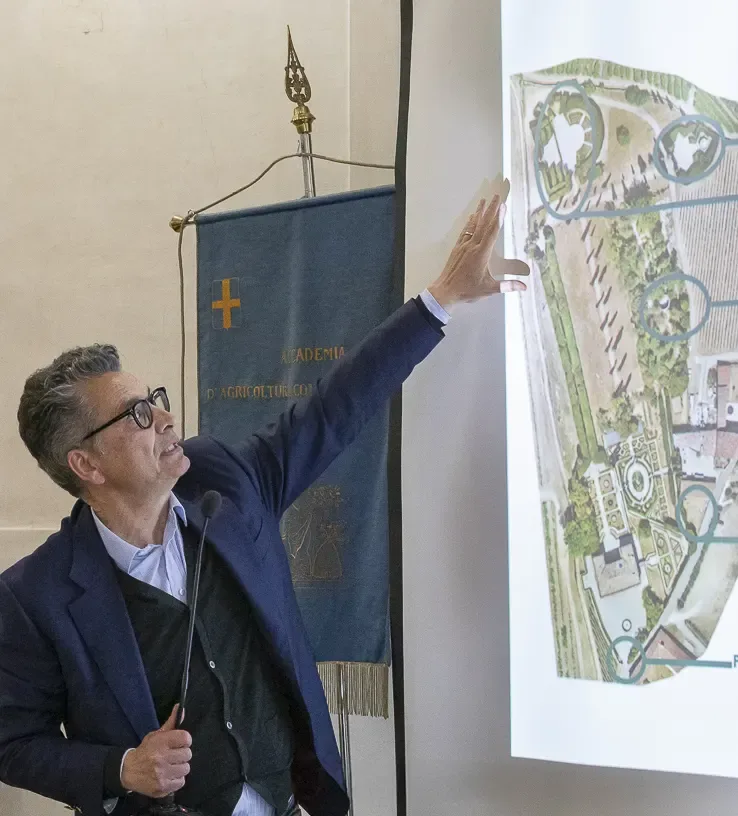
A Garden for Everyone
The Garden of Pojega is now ready to welcome visitors with a renewed accessibility and ticketing system. As architect Cavallo noted: «Returning this place to the public was a gesture of cultural responsibility. We can truly speak of a new Garden of Pojega, unlike it has ever been before.»
In the audience, landscape architect Paola Muscari shared a poetic image: «The Garden of Pojega is like a cat sleeping on a hill of vineyards. It lives in symbiosis with the landscape, different in summer and in winter—just like the eyes of those who return and see it anew.»
Want to experience this extraordinary place for yourself?
Visit the official website of the Garden of Pojega for opening hours, tickets, and upcoming events.
